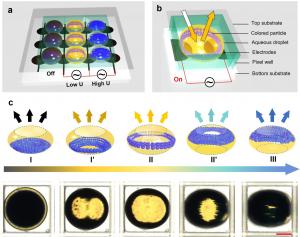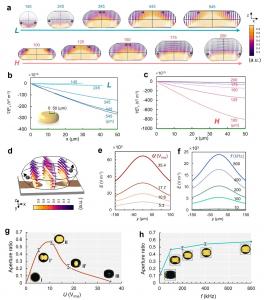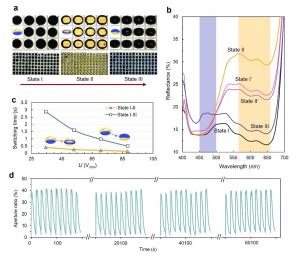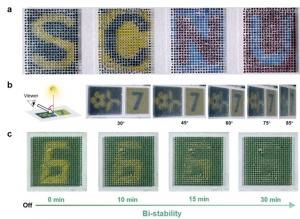A reflective display based on electro-microfluidic assembly of particles within suppressed water-in-oil droplet array
CHINA, December 7, 2023 /EINPresswire.com/ -- Reflective displays have stimulated considerable interest because of its friendly readability and low energy consumption. Scientist in China invented a reflective display technique via an electro-microfluidic assembly of particles (eMAP) strategy whereby colored particles assemble into annular and planar structures inside a dyed water droplet to create “open” and “closed” states of a display pixel. This eMAP based device can display designed information in three primary colors with large viewing angle and semi-bistability.
In an article published in Light Science & Application, a team of scientists, led by Professor Lingling Shui from the International Joint Laboratory of Optofluidic Technology and System (LOTS) at South China Normal University have developed an interesting reflective display technique based on an electro-microfluidic assembly of particles (eMAP) strategy, offering the advantages of easy fabrication, fast response, and multicolor display performance. The colored particles suspended in a water-in-oil droplet are driven to assemble into multiple structures, resulting in a reversible pixel switching performance in a controllable manner according to a strengthened dielectrophoretic effect. The colored particles in a water-in-oil droplet can be driven to slide along the curved water-oil interface to assemble at the bottom or top area to form a planar structure and around the equator to form an annular structure in a continuous way, generating closing and opening states and showing multiple blended colors. The optimized eMAP display (eMAPD) can display multiple colors by driving one group of single-color particles into various assembled structures within a dyed droplet. This allows operation in two distinct ways, which we term “light reflection” and “light transmission” modes. The single particle system greatly simplifies the driving system and increases the response speed of the display. The primary colors of CMYK are created to validate the feasibility and full-color performance. In addition, the fluidic emulsion system offers a smooth and flexible interface for both encapsulating and manipulating particles, and meanwhile holding the possibility for preparing a flexible display. These scientists summarize the working principle of eMAPD as:
“We design a device enable controlling the movement and assembly of the particles inside the droplet through dielectrophoresis, three main display states can be realized using only a single type of particle. Combined with dielectrophoretic assembly, the spatial height and relative position of the particles can be controlled with relative accuracy. It is worth mentioning that the three states include a "light transmission" state, which is difficult to achieve with conventional electrophoretic e-paper technology, where the particles assemble at the equator of the droplet, allowing light to pass through the droplet. This provides a combination of reflective and transmissive options for color regulation of e-paper, enhancing the expandability of display colors.”
“To improve the display performance, we optimized the particle and droplet materials, the droplet pixel size and shape, and the driving parameters. The working mechanism was interpreted with an electric-flow-light multi-physical model. This eMAPD is capable of displaying multiple colors with excellent reversibility, large viewing angle and semi-bistability.”
“The proposed eMAPD has shown the advantages of compatible fabrication, accessible material system and high performance. It would be an excellent candidate to form a green display technology for various application scenes.” the scientists forecast.
DOI
10.1038/s41377-023-01333-w
Original Source URL
https://doi.org/10.1038/s41377-023-01333-w
Funding information
This work was supported by the Key Project of National Natural Science Foundation of China (No. 12131010), the Special project for marine economy development of Guangdong Province (GDNRC[2023]26), the International Cooperation Base of Infrared Reflection Liquid Crystal Polymers and Device (2015B050501010) and ARC Grant CE170100026.
Lucy Wang
BioDesign Research
email us here
Legal Disclaimer:
EIN Presswire provides this news content "as is" without warranty of any kind. We do not accept any responsibility or liability for the accuracy, content, images, videos, licenses, completeness, legality, or reliability of the information contained in this article. If you have any complaints or copyright issues related to this article, kindly contact the author above.




